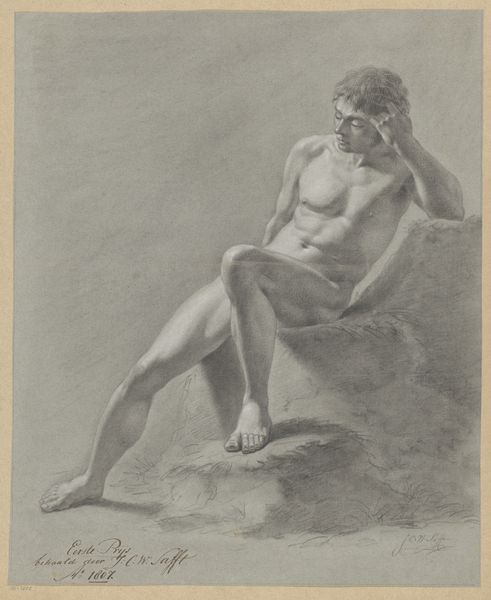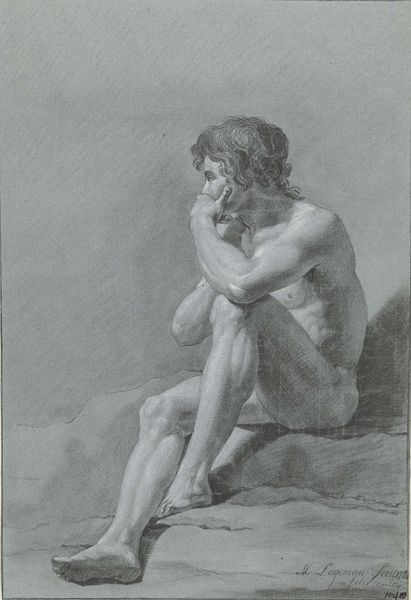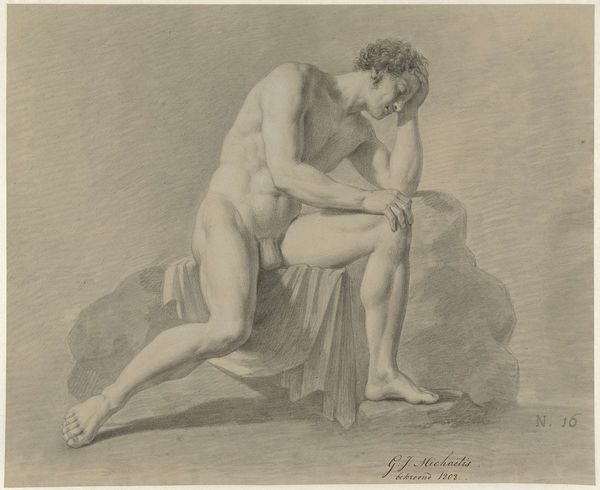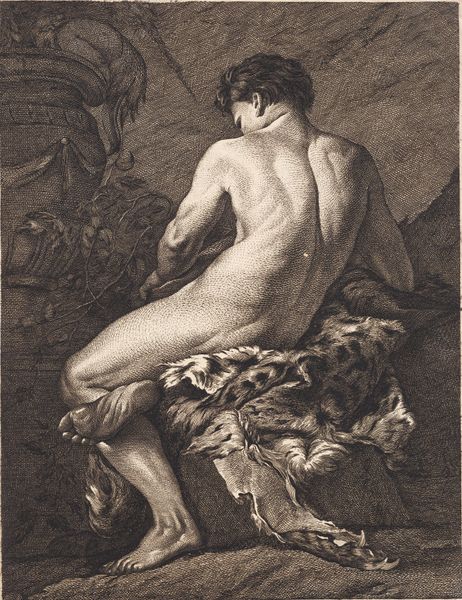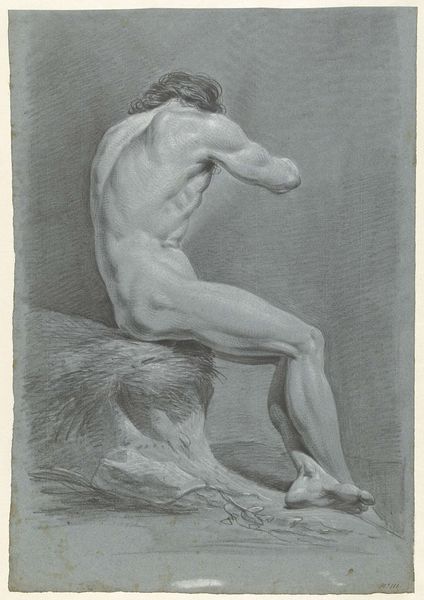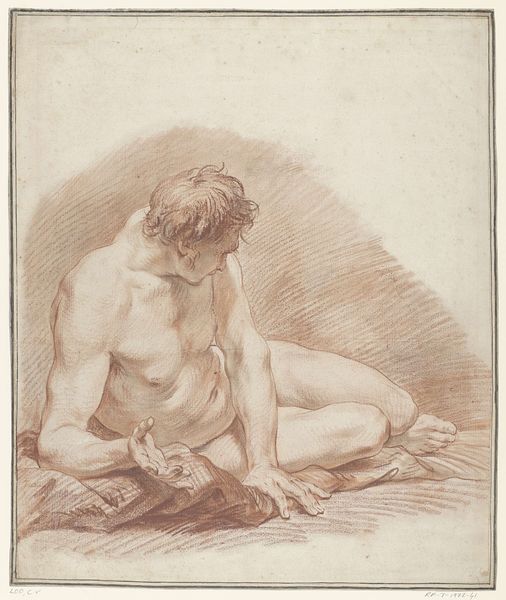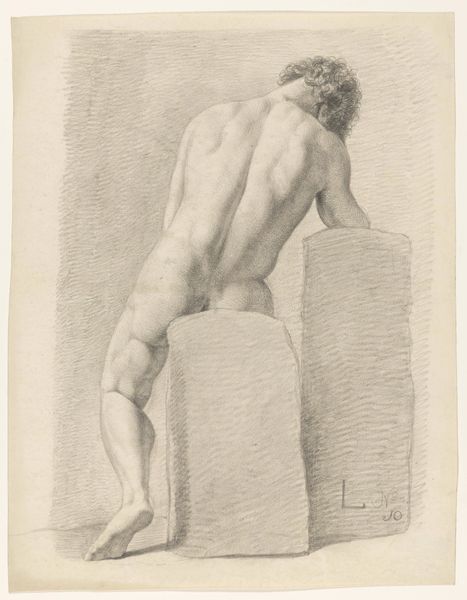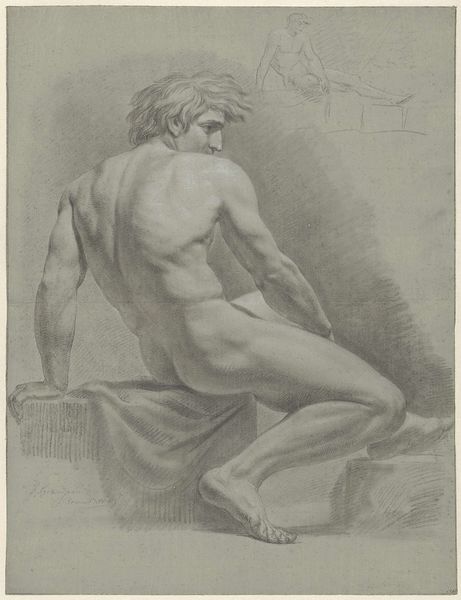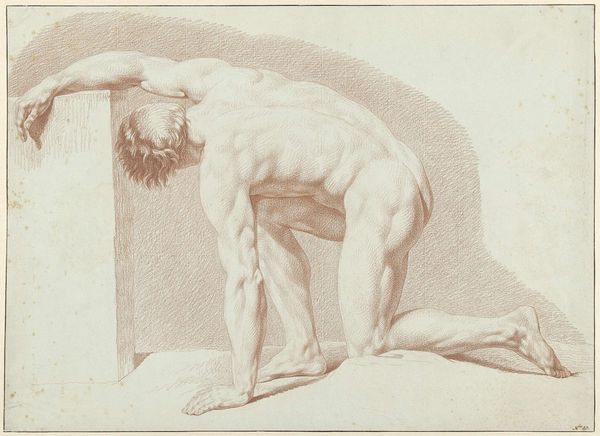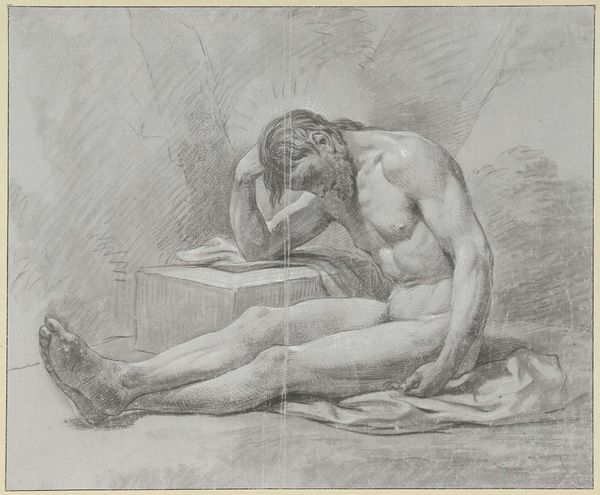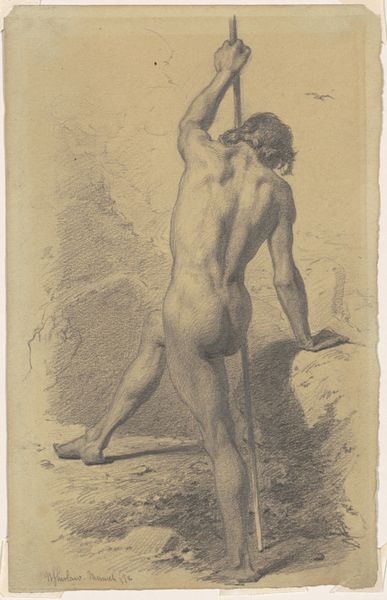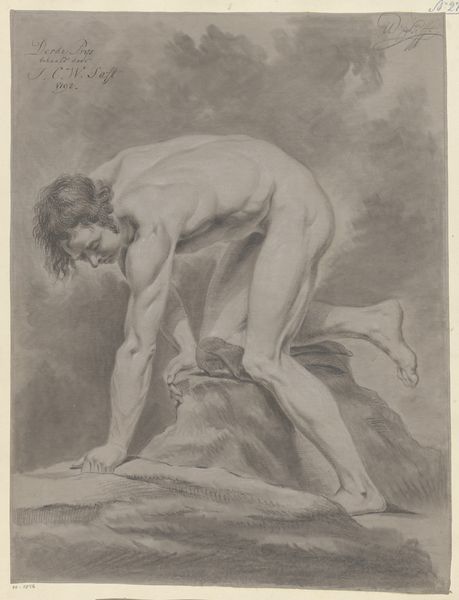
drawing, print
#
drawing
#
neoclacissism
#
narrative-art
# print
#
figuration
#
classicism
#
history-painting
#
academic-art
#
nude
Dimensions: height 503 mm, width 435 mm
Copyright: Rijks Museum: Open Domain
Curator: Here we have “De leeuwendoder,” or “The Lion Killer,” a drawing and print made around 1805 by Joannes Bemme. It resides here at the Rijksmuseum. Editor: The reddish-brown monochrome immediately sets a somber mood. The subject is a nude male figure, but there's a stark contrast between his smooth skin and the very textured lion skin he’s seated on. I'm interested in the interplay between form and the void, a perfect Classicist strategy. Curator: It’s intriguing, isn't it? Notice the neoclassical elements—the idealized form, the narrative pull suggesting a heroic past. Academic art was so interested in grand narratives! How do you think Bemme, in the style of his era, reflects power dynamics through his careful strokes? Editor: The posture conveys pensiveness, not triumph. It's an interesting take – subverting the expectation of the conquering hero through line and form. It’s interesting to consider the materiality of the piece, as a print, suggesting a mass production for dissemination of the idealized heroic nude, thus the idea itself. What materials were available to Bemme to convey tone and texture? Curator: We know Bemme worked within a printmaking culture that needed accessible and replicable forms. This wasn’t unique. I mean, he, and workshops around him, would consider what kind of paper, ink, tools would easily, quickly and affordably depict this, probably to satisfy demand for such historical subjects at that time. Editor: Yes, I agree. The very medium emphasizes the artistic, social context—a commodity produced within a network of workshops. It gives an economic context. This connects us directly to an art marketplace, something seemingly very absent in many museum depictions. Curator: Precisely. And in that system, this becomes not only about heroic tales but a marker of societal values circulated via these kinds of affordable images. These depictions legitimized the existing class structure. How could it not, by suggesting there's such a thing as superior masculinity? Editor: It changes how we "read" it; a symbol and a critique. Thank you, these social insights truly shift one's perspective. Curator: And for me, thinking about the material realities offers us a more inclusive reading too.
Comments
No comments
Be the first to comment and join the conversation on the ultimate creative platform.
